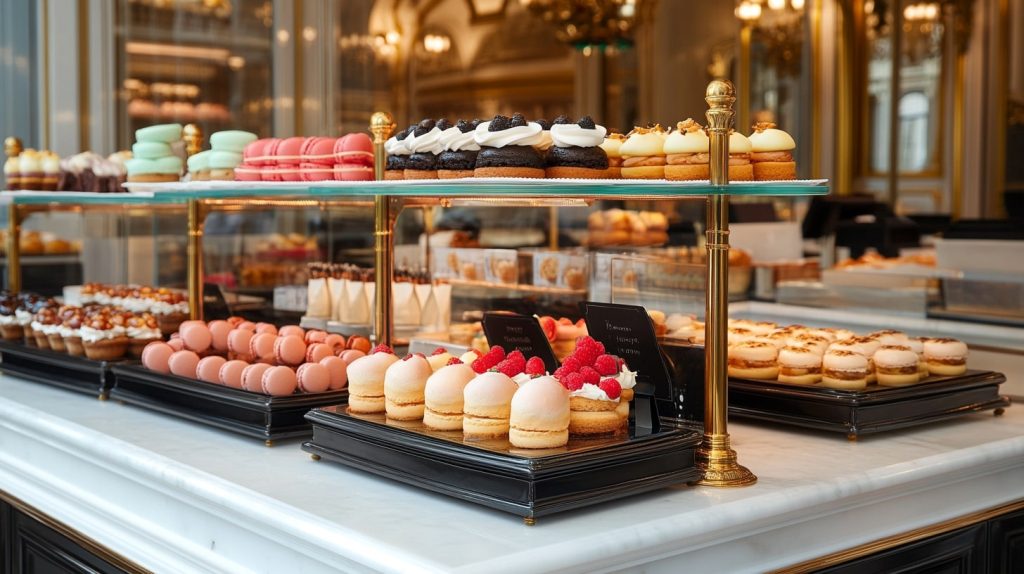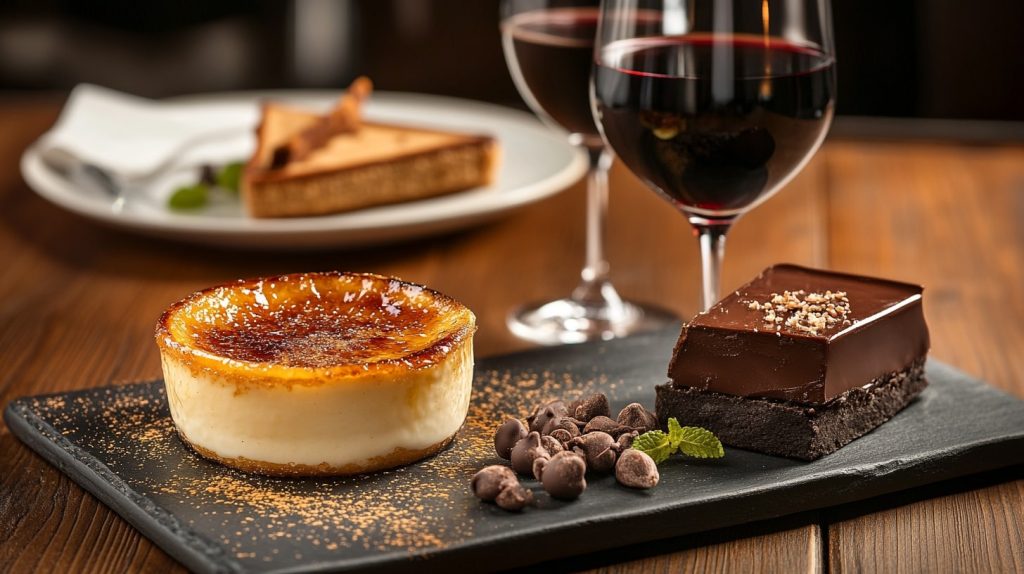
When it comes to indulgence, few things compare to the heavenly world of classic French desserts. These sweet masterpieces are more than just food—they’re experiences blending technique and creativity.
From creamy, rich delights to delicate pastries, French desserts have a way of making every bite feel like a small celebration. Whether it is the delicate layers of a mille-feuille or the airy joy of a well-made floating island, these desserts are proof that the French know their way around sweetness.
They aren’t just about taste—they’re about precision, innovation, and aesthetics. It is no wonder people fall in love with French pâtisseries at first sight (and bite)!
So, let’s embark on a culinary tour!
What makes French pastries and desserts unique?
Ever wondered how French confections became world-renowned?
Their journey began in the Middle Ages, as simple creations made from locally available ingredients, such as honey, nuts, and dried fruits. Monasteries played a significant role in early dessert-making, crafting spiced cakes and rustic tarts that were popular during feasts and religious celebrations.
The real evolution, however, took shape in the 17th century with the emergence of the professional “pâtissier.” With improved access to sugar and new culinary techniques, these specialists elevated desserts from rustic fare to sophisticated works of art, marking the true beginnings of modern patisserie.
French courts embraced elaborate pastries, making dessert an essential part of fine dining. By the 19th century, the culinary genius Marie-Antoine Carême revolutionized French dessert-making even further. He introduced architectural elegance to dessert presentation, creating intricate centerpieces and developing the modern techniques still taught in pastry schools today.
His influence cemented France’s reputation as a dessert powerhouse, known for iconic creations.
A wonderful carousel of French desserts
Do you want to impress a dinner party or just try your hand at making a famous French recipe but don’t know what each recipe name stands for?
Here’s a list of trusty favorites, with that signature French je ne sais quoi.
Crème Brûlée

The name translates to “burnt cream,” and it is a classic that has delighted taste buds for centuries.
The earliest known recipe for a dish resembling French crème brûlée can be traced back to a 1691 cookbook by French chef François Massialot.
This creamy vanilla custard base topped with a caramelized sugar hard crust is without doubt the most loved dessert in France. The sensation of cracking through the hard surface to reveal the velvety custard is simply divine.
It is best served slightly chilled so that the warmed torched top will create a nice contrast.
Chocolate Mousse, a chocolate lover’s dream.
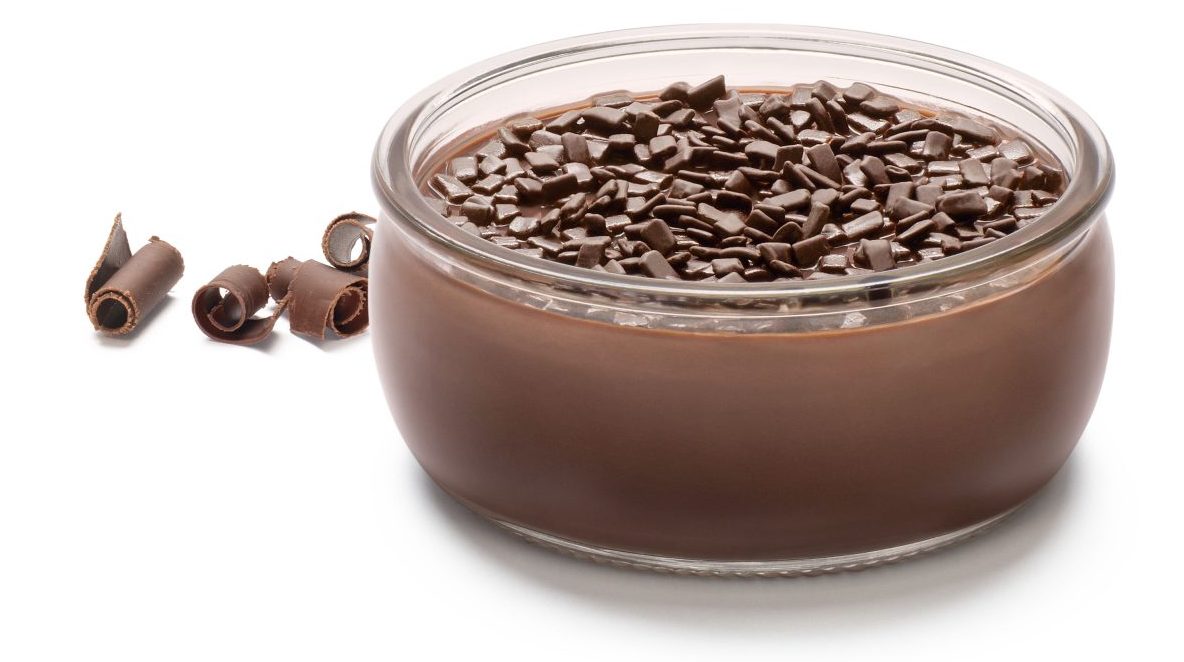
A dessert with a rich history and an even richer flavor.
The traditional French chocolate mousse is made by folding melted chocolate into egg whites and sometimes whipped cream, creating that signature light and fluffy texture.
Over the years, many variations have emerged, incorporating different types of chocolate, flavorings like coffee or liqueur, and toppings such as fresh berries, nuts, or whipped cream.
And it is so incredibly versatile! Serve it in elegant individual cups for a fancy dinner party, or make it into a more casual dessert for a family gathering.
It is an absolute crowd-pleaser, whatever the occasion!
Tarte Tatin
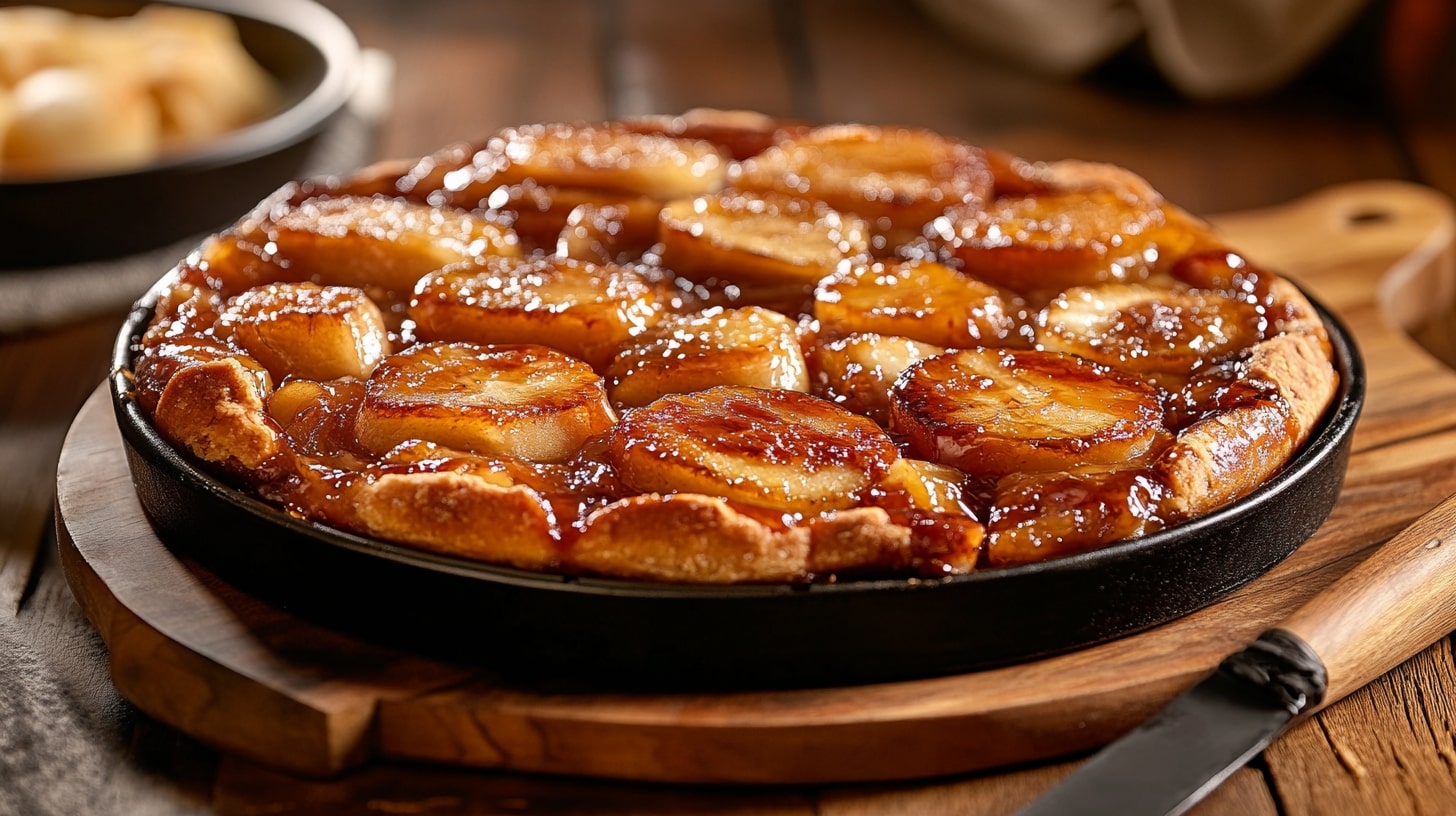
This upside-down caramelized apple tart is rich, buttery, and satisfyingly sweet. Best served warm, it pairs perfectly with a dollop of crème fraîche or vanilla ice cream.
The dessert is named after the Tatin sisters, Stéphanie and Caroline, who ran the Hotel Tatin in the late 19th century.
Legend has it that Stéphanie was preparing a traditional apple tart but accidentally overcooked the apples in sugar and butter. In a rush to save the dish, she placed a pastry crust on top of the caramelized apples and baked it in the oven.
When flipped onto a plate, the result was a beautiful, caramelized upside-down tart that became an instant hit with the hotel’s guests.
Éclairs
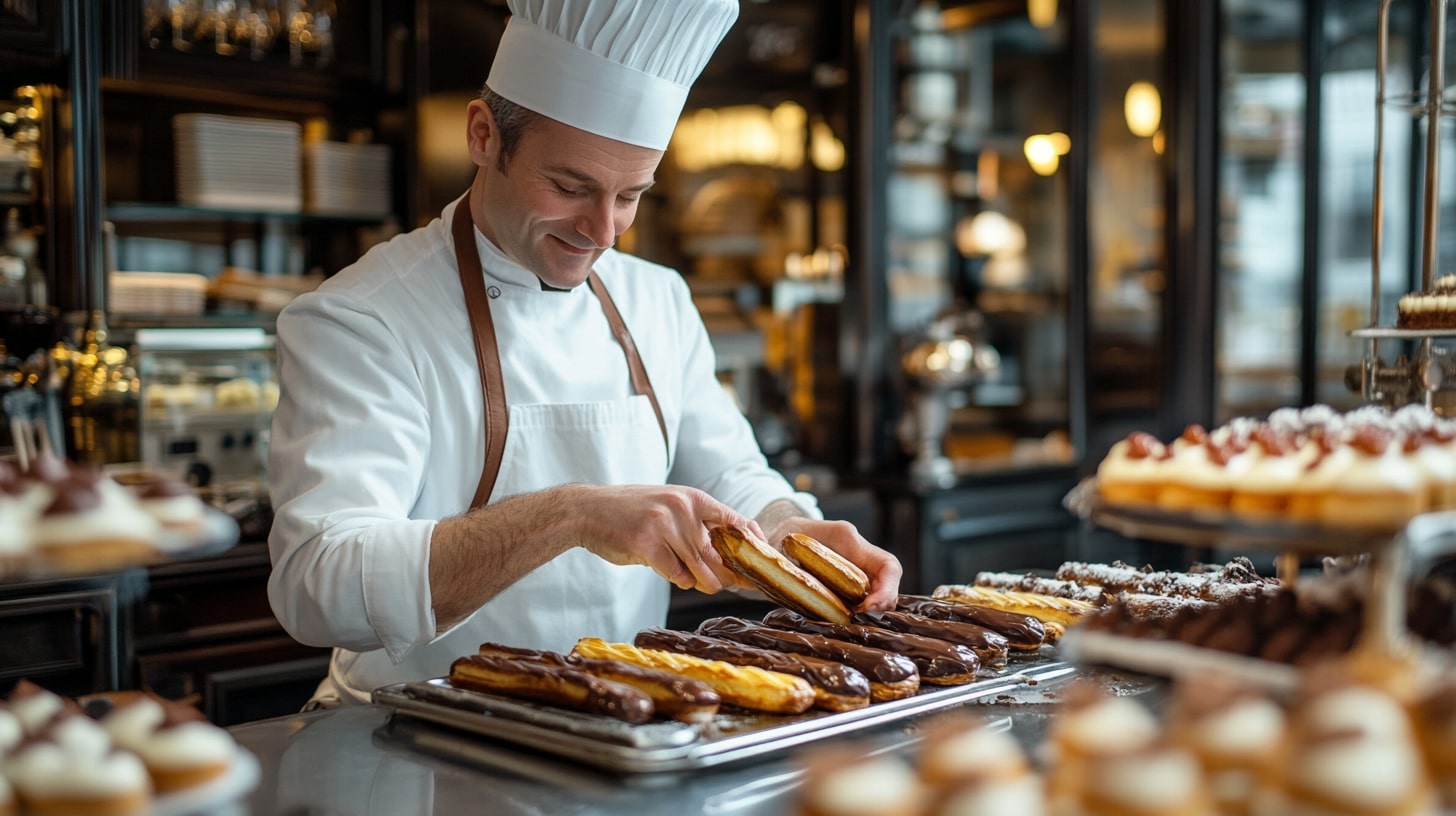
The word “éclair” means “flash of lightning” in French, and it is believed this name was given because they are often eaten very quickly!
The choux pastry dough is piped into oblong shapes and baked until crisp and hollow inside. Once cooled, the pastries are typically filled with a rich custard or pastry cream and then topped with a glossy layer of icing.
Although the chocolate éclair recipe is the classic go-to dessert, modern pâtisseries also offer a variety of flavors and creative twists—from coffee or fruit-flavored creams to more adventurous options like matcha or salted caramel.
Mille-Feuille

The origins of mille-feuille (thousand leaves) are somewhat murky. Some credit the famous chef Marie-Antoine Carême with its invention, but there are earlier references to similar pastries in French cuisine.
Also known as “Napoleon,” this dessert features layers of crisp puff pastry alternated with rich pastry cream and topped with icing or powdered sugar.
Some variations include adding fresh fruits, jam, or flavored creams to the layers.
It is best enjoyed with a cup of coffee or at a dinner party—a true celebration of French pastry artistry.
Paris-Brest
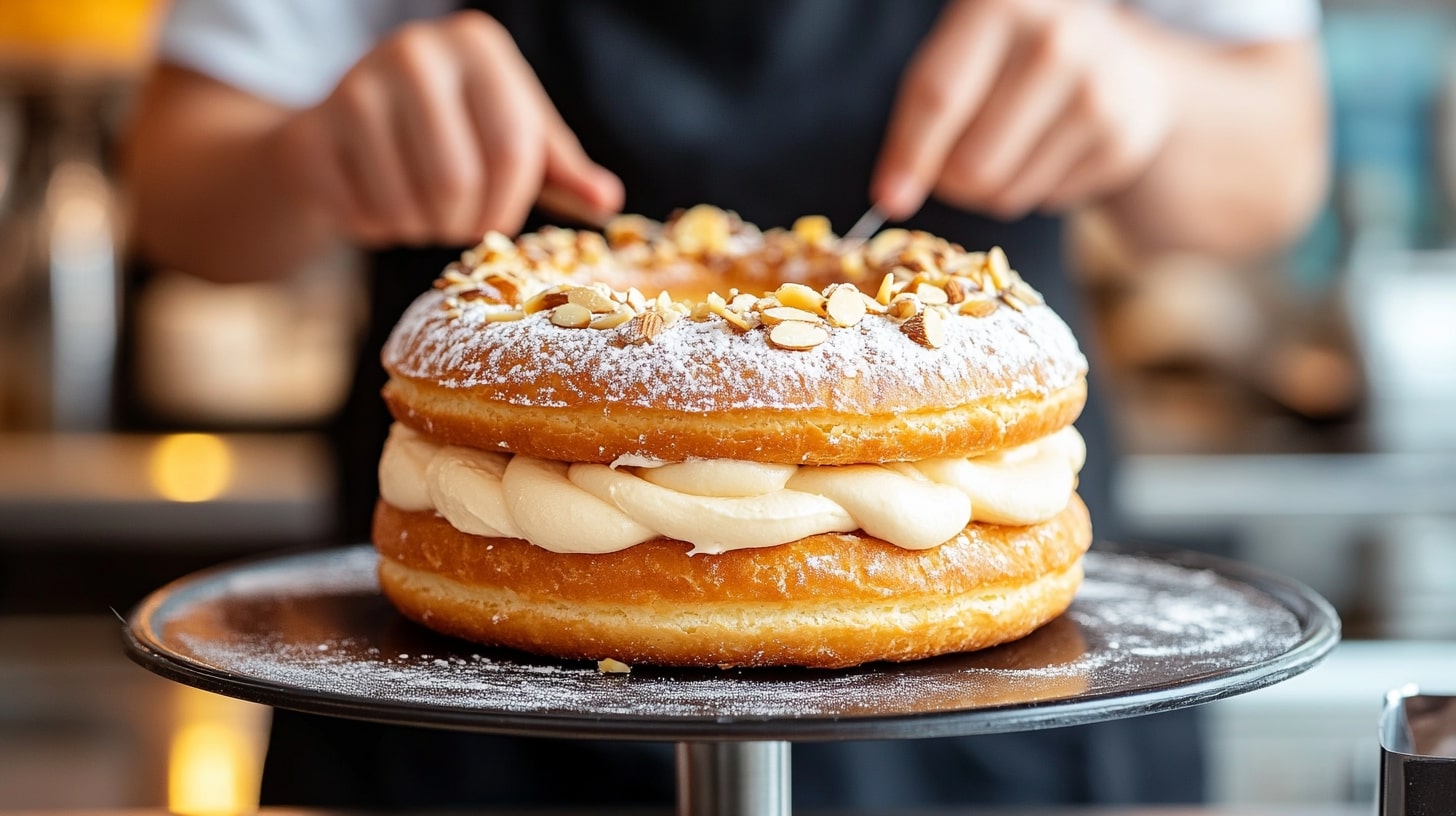
It was created in 1910 by pastry chef Louis Durand to commemorate the Paris-Brest-Paris bicycle race. The circular shape of the pastry is meant to represent a bicycle wheel.
Paris-Brest is made from choux pastry, the same dough used to make éclairs and profiteroles, but it is piped to form a ring.
After baking until golden and crisp, the pastry is sliced horizontally and filled with a delicious praline-flavored cream, often made with a mixture of butter, sugar, and ground hazelnuts or almonds.
The top is typically dusted with powdered sugar and sometimes garnished with slivered almonds.
Simply irresistible!
Profiteroles
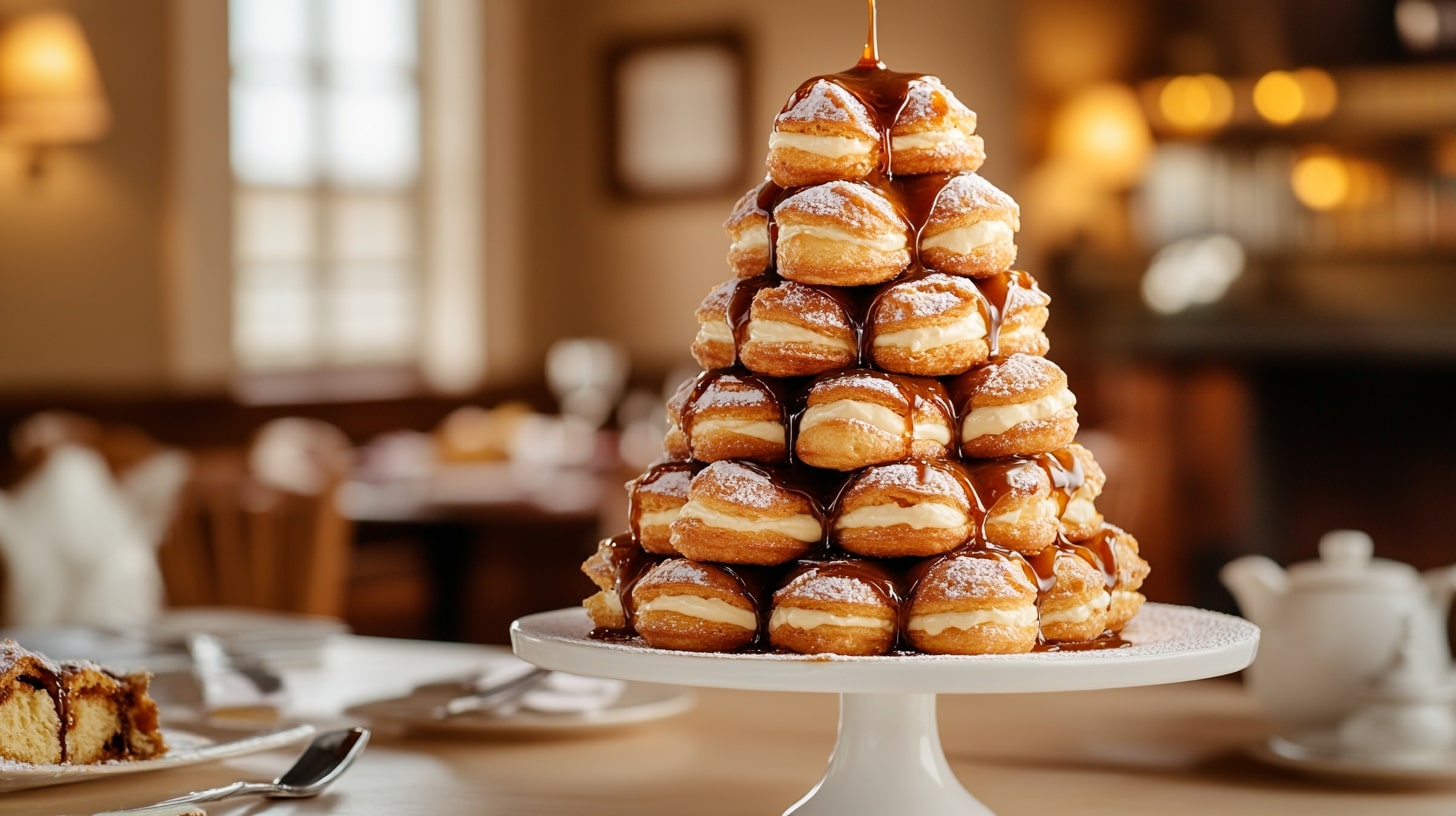
A classic French dessert that’s both elegant and indulgent.
These delectable treats are made from choux pastry, the same dough used for éclairs, and are typically filled with creamand topped with a luscious chocolate sauce.
For a twist, some are even filled with ice cream!
Profiteroles are often stacked into a beautiful tower called a croquembouche, which is traditionally served at French weddings and special occasions.
This impressive presentation makes profiteroles a show-stopping dessert and a marvel of food styling.
Floating Island
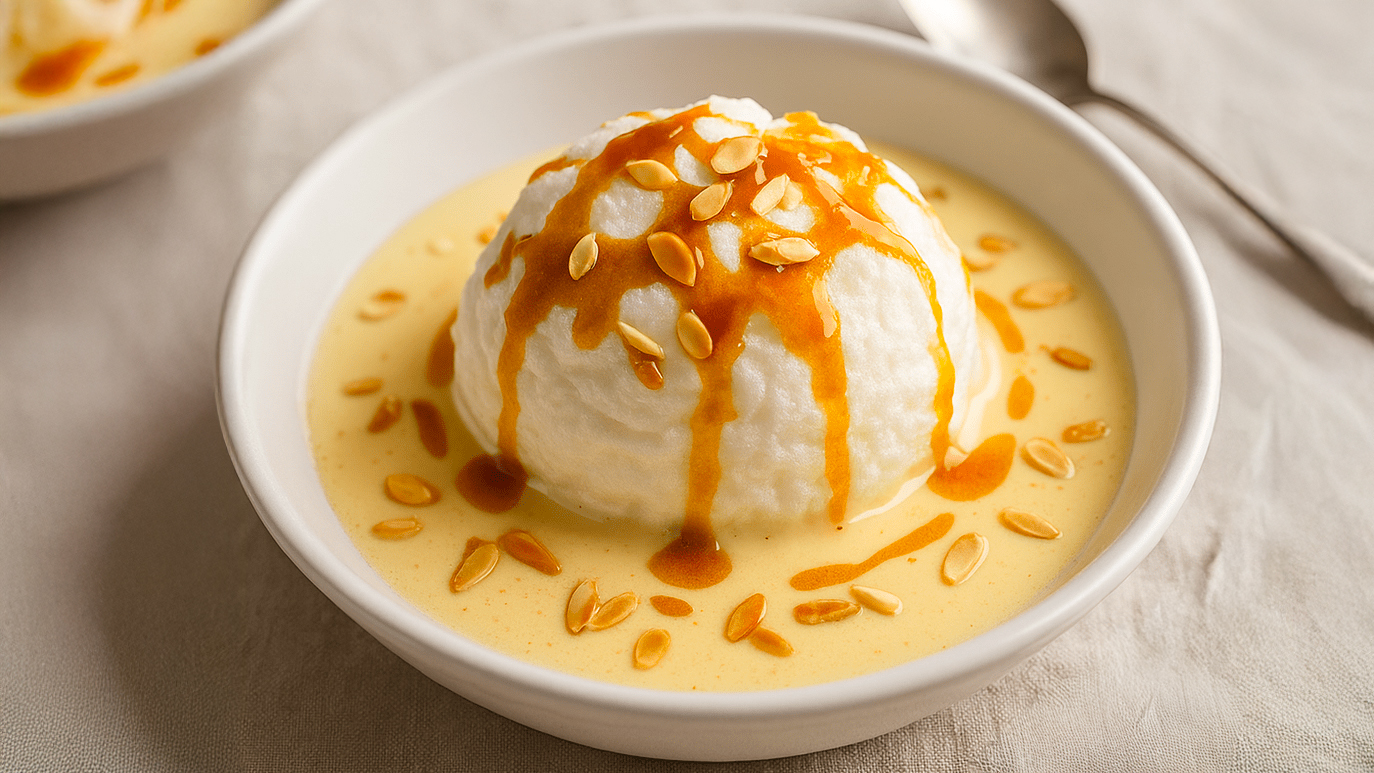
The “Île Flottante” is a traditional French dessert featuring a light, milk-poached meringue floating on a sea of creamy vanilla custard sauce, known as crème anglaise.
It is often garnished with caramel sauce or toasted almonds.
This elegant and airy treat is both visually appealing and delicious.
It is perfect for a special occasion or as a delightful way to end a meal and must be served chilled.
Macarons
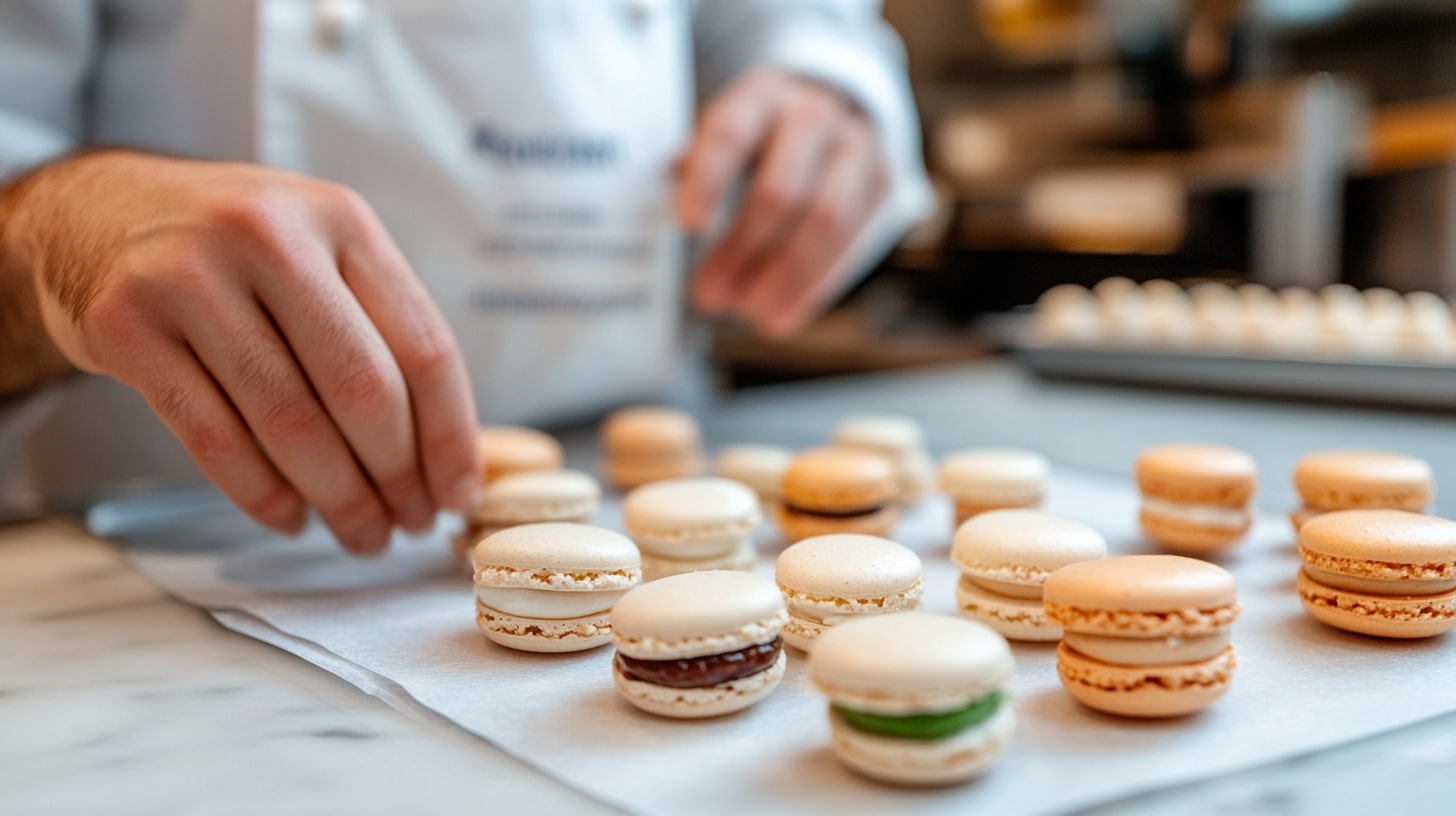
Delicate, meringue-based cookies made from almond flour, egg whites, and powdered sugar, resulting in a light, airy texture with a crisp shell and a chewy interior.
They are often sandwiched together with a variety of fillings, such as buttercream, ganache, or fruit preserves, offering endless flavor combinations.
The process of making macarons can be quite challenging due to the precise techniques required.
Clafoutis
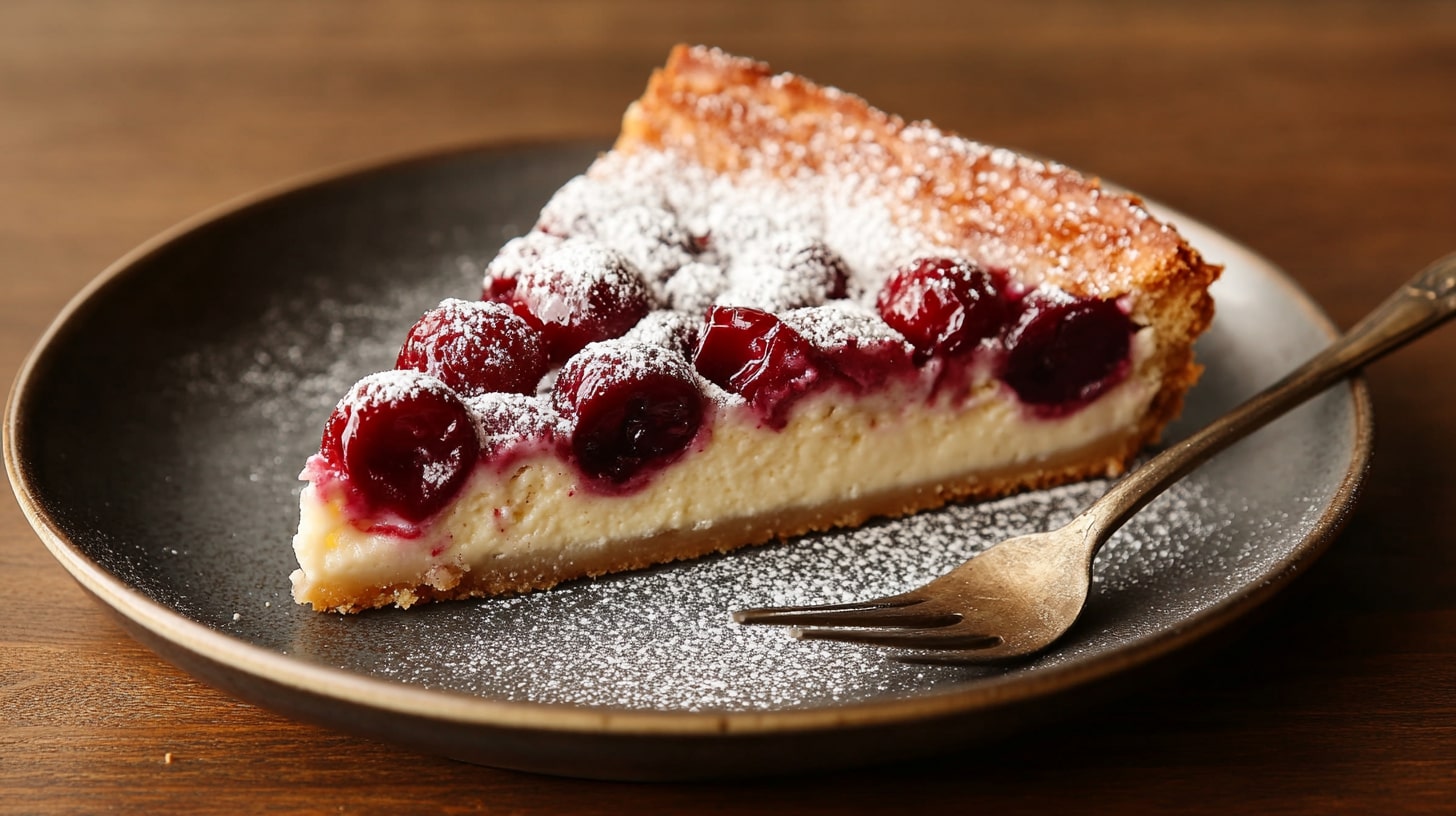
Clafoutis is a traditional French dessert that’s both rustic and delightful.
It hails from the Limousin region of France and features a batter made from a mixture of eggs, milk, flour, sugar, and sometimes a touch of vanilla or almond extract. This batter, similar to a pancake or flan batter, is poured over fresh fruit, typically cherries, before being baked to perfection.
It is simple, comforting, and ideal for showcasing seasonal fruits.
Clafoutis is typically served warm, sometimes dusted with powdered sugar. It is a simple yet elegant dessert that celebrates the natural flavors of the fruit.
Symbolic holiday desserts
During the holidays, French tables come alive with festive treats that capture the spirit of the season.
The bûche de Noël, or Yule log, is a classic: a sponge cake rolled with buttercream and decorated to resemble a festive log.
The galette des rois, or King Cake, celebrates Epiphany with its buttery, flaky pastry and almond cream filling. Hidden inside is a small charm, and the lucky finder gets to be “king” or “queen” for the day.
Let’s not forget the warm, spiced notes of pain d’épices, a traditional gingerbread that pairs perfectly with a hot drinkon a cold winter evening.
Conclusion
Traditional French desserts are the perfect blend of elegance, flavor, and tradition.
From delicate pastries to rich custards, they offer something for everyone.
Whether you’re savoring a warm slice of apple or pear Tarte Tatin on a cozy evening or treating yourself to macaronswith your afternoon coffee, these desserts remind us why French culinary know-how is so admired.
Ready to dive into this world of sweetness? Go ahead—there are a myriad of French dessert recipes out there to try, and your taste buds will thank you.
Life is short. Eat the dessert.
FAQ
Where to experience the best French desserts
If you want the real deal, a trip to a French pâtisserie is a must. Walk into any local bakery, and you’ll be greeted by the heavenly aroma of freshly baked pastries. Whether you’re in Paris, Bordeaux, or a quaint village in Provence, you’ll find regional specialties waiting to be discovered. Indulge in a canelé in Bordeaux or explore the rich traditions of Alsace during the holiday season. No matter where you go, French desserts are bound to leave a lasting impression.
What is the most popular dessert in France?
It is hard to pick just one, but the macaron and crème brûlée consistently top the charts. Macarons, with their delicate shells and flavorful fillings, have become international stars. Crème brûlée, on the other hand, remains a comforting classic that never goes out of style.
